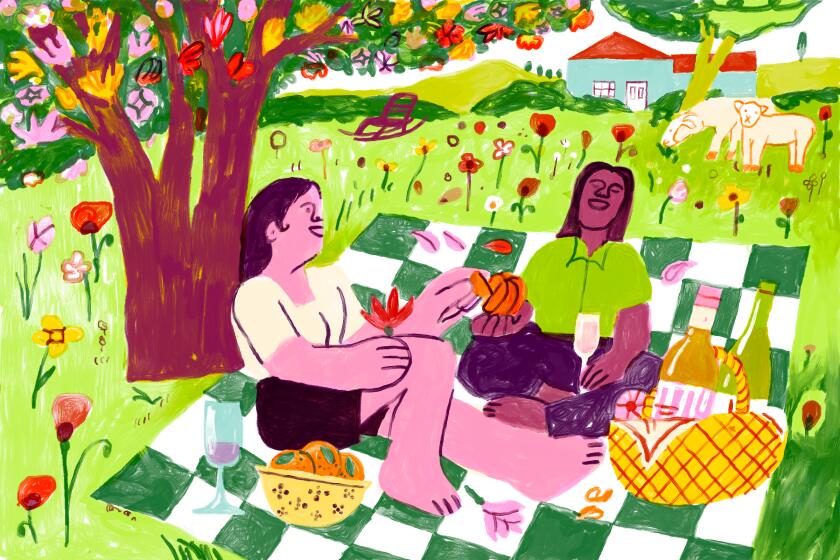New Encyclopedia of Wines and Spirits 4th edition, by Alexis Lichine, et al. (Knopf: $40; 733 pp., maps)
- Share via
The dust jacket is not far off the mark in calling this a “premier reference work.” I have kept by my desk a copy of each successive edition from the first.
Since the first edition, changes in the world of wine have been many and sweeping. This edition does very well in taking them into account. For the United States, the importance of technological advances such as mechanical harvesting of grapes are noted and many of the new wineries are described. Major countries have changed their wine laws, occasionally with historic consequences; since 1974, Portugal requires that vintage port be bottled there, ending the tradition that it be bottled in Britain. Economic pressures are changing the great wines; “the amazing golden, mouth-filling Trockenbeerenauslesen wine” of Germany is dying out because it is getting too expensive to pick the overripe grapes one by one.
The reader will find listed almost every wine, vineyard, winegrowing district, grape variety, wine term, etc., except for the most obscure. The contributors obviously know their various wines and districts at first hand. Accounts of Bordeaux chateaux give many details compactly and have occasional pleasing touches of local wine politics. There are more or less extended essays on important topics so the reader can get a quick introduction to Bordeaux or Italy or Israel or Canada.
The organization of the book requires frequent use of the extensive index (38 large pages of small type). A topic may be listed alphabetically in the main body of the book, but it can appear in three other ways: as part of a larger article, in one of the 10 introductory chapters on basic subjects such as “History of Wine” or “Starting a Cellar,” or in one of the several appendices. Persistence is needed because of some unexpected listings. Romanee Conti, Burgundy’s most famous vineyard, is alphabetized as La Romanee Conti, though few other famous Burgundy vineyards are alphabetized by the definite article.
One may question the value of devoting 100 pages to such things as minor Bordeaux chateaux and obscure German vineyards. There are specialized directories for those who are really keen to learn that Chateau Les-Vieilles-Souches-La-Marzelle has 10 acres of vines and produces an average of 18 barrels of wine. And why many pages of conversion tables of inches to centimeters and such-like? Few care, and those who do probably have calculators.
Alexis Lichine deals only infrequently, and always gingerly, with the decline in quality of some of the great wines, particularly in Burgundy. Since Anthony Hanson addressed the problem forthrightly and in detail in his “Burgundy” (Faber & Faber, 1982), it is difficult to ignore, much as the wine trade would like to. Of Romanee Conti, Lichine does say, “the quality is at present below that of the nectar once made.” The decline he attributes to replanting the vineyard after 1945, but other vineyards have been replanted without such ill effect. Of Chateau Mouton-Rothschild he notes that it was once known for “a special, almost metallic flavor,” but that “in recent vintages, however, this flavor has disappeared.” Such comments are scarce. At least he alludes to the problem, which is more than most writers do.
The bibliography has not been brought up to date to the extent that the text has. Some books have been superseded, and some were not very good to begin with. There are a few curiosities such as a technical book in Russian.
The book that most invites comparison is Hugh Johnson’s excellent “Modern Encyclopedia of Wine” (Simon & Schuster, 1983), another enormous compilation of information. It is not exactly an encyclopedia, being organized more on a geographic basis. In any event, I would not like to be without either work.
More to Read
Eat your way across L.A.
Get our weekly Tasting Notes newsletter for reviews, news and more.
You may occasionally receive promotional content from the Los Angeles Times.








